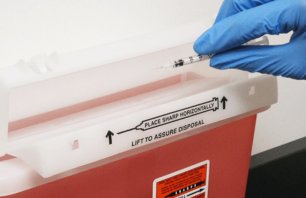The nation is facing an alarming crisis with opioid abuse, with more than 80 percent of opioids produced worldwide consumed right here in the United States. According to the CDC, almost half of all opioid overdose deaths today involve prescription opioids. Healthcare organizations in particular have become a main target for diverting and accessing opioids, putting employee and patient safety at risk, while also threating the organization’s reputation.
Unfortunately for many healthcare facilities, drug diversion, can be quick & easy, but difficult to detect. A recent article from Healthcare Facilities Management, points to a key issue for many organizations: a lack of formal processes for proper disposal of controlled substances.
By implementing a comprehensive drug diversion program, organizations can strengthen existing security procedures to improve drug safety and help prevent diversion—an important step toward ending opioid abuse. Review what your DEA registration requirements are for specifics, but here are four things to consider as you get started.
Invest in secure containers for disposal of controlled substances. Unsecure waste receptacles for controlled-substance waste are a major contributor to drug diversion. It only takes seconds for employees or patients to retrieve unused drugs from unsecure containers. The best waste receptacles for controlled substances destroy medications as they are discarded. Look for containers with a one-way disposal path, which increases safety and security.
Establish a multidisciplinary drug diversion program. New research presented at the American Society of Health-System Pharmacists Midyear Clinical Meeting & Exposition (December 3-7, 2017) shows a multidisciplinary approach to drug diversion reduces risks for healthcare facilities, including risks related to compliance, reputation management and reimbursement. A multidisciplinary drug diversion committee can advise hospital leaders on the best approach to controlled-substance storage, safety, handling, prescribing and more. When establishing your committee, be sure to include hospital administrators, nurses, pharmacists, anesthesiologists, environmental services personnel and security professionals.
Teach employees to recognize the signs of drug addiction. Resources like this guide from the U.S. Department of Justice are key in training employees on how to identify and address signs of drug addiction in the workplace. Make sure employees are aware of key indicators: drug abusers often behave erratically; they also call off from work frequently, leave the worksite for long periods of time and spend a lot of time near areas where drugs are stored. By educating on the signs of drug abuse, employees will be empowered to speak up when a team member appears in need of help. It’s also important to consider support options and offer opioid recovery assistance for those suffering from addiction.
The time for change is now, and we’re here to help. Stericycle has developed a Controlled Substance Waste program—the CsRx® Service—that enhances security around controlled-substance waste disposal. Call 855-602-6279 to learn more.
September 15, 2018



